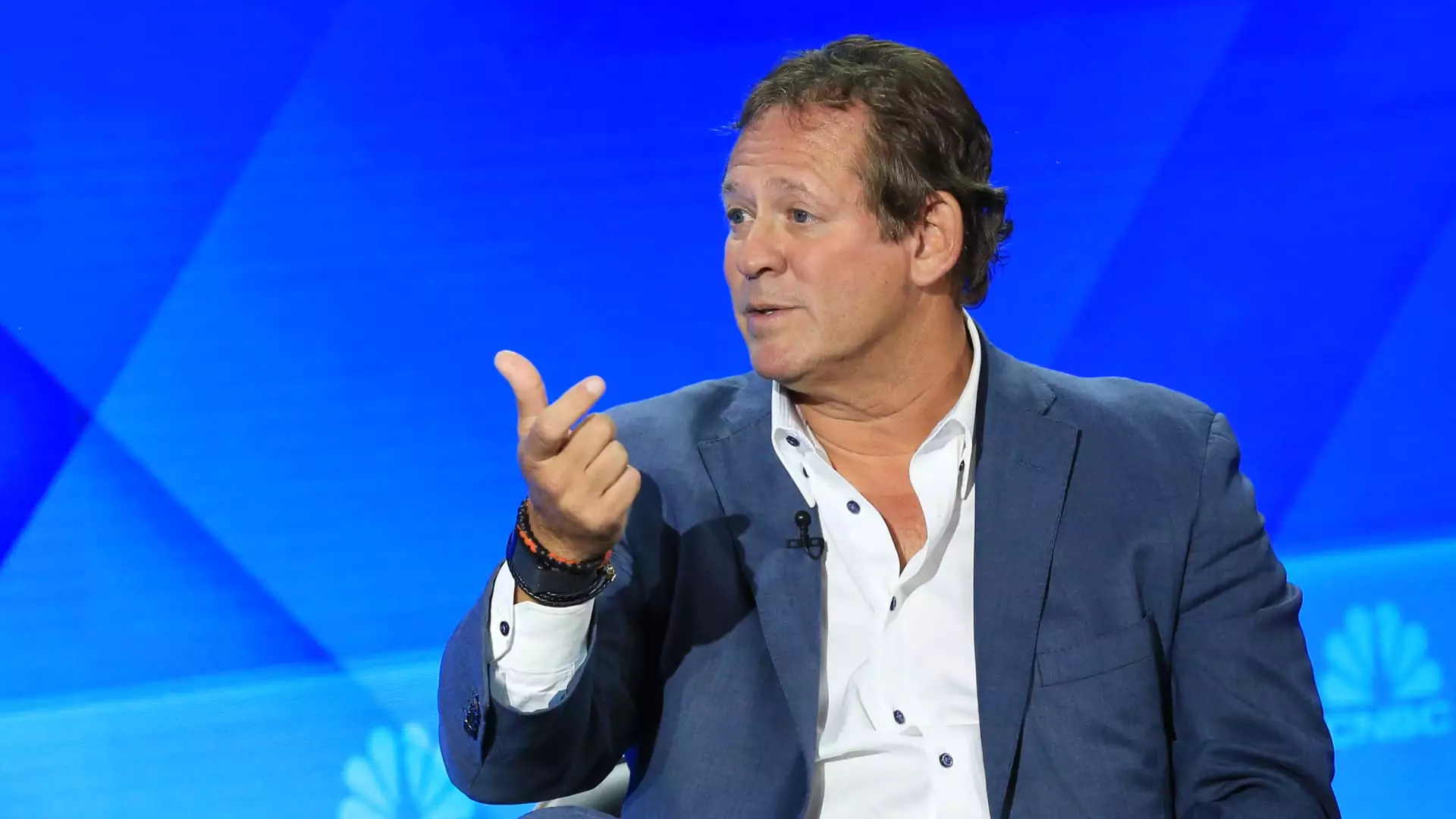In the unpredictable world of finance, recent developments have ignited discussions among investors, especially concerning high-yield bonds. Rick Rieder, BlackRock’s chief investment officer for global fixed income, has made a notable pivot toward high-yield assets with maturities between three to five years. What’s fascinating is his timing: in the wake of Moody’s recent downgrade of the U.S. credit rating from Aaa to Aa1, this decision signals a strategic balancing game, maneuvering through volatility without falling prey to the immediate panic that grips many investors during such tumultuous times. The spike in Treasury yields, particularly the 10-year peaking over 4.5%, should serve as a looming wake-up call for those who dismiss the significance of yield curve fluctuations.
Rieder’s analysis reflects a broader understanding of the current economic climate. While many are concerned about the long-term ramifications of governmental policies—especially tariff implementations that spooked markets last April—Rieder holds an unconventional belief that the economic pullback will be fleeting. A bullish attitude amidst such chaos is refreshing, and it echoes a center-right ideological inclination towards market solutions over government interventions.
Navigating the High-Yield Landscape
The distinction Rieder makes between the different grades of bonds is particularly telling. He chooses to shy away from CCC-rated bonds, which carry significant default risk, especially in an environment potentially strained by economic downturns. Instead, he finds the B-rated segment to be the “sweet spot.” This suggests a nuanced understanding of risk versus reward; B-rated bonds can offer attractive yields without the trepidation associated with lower-rated options. Rieder’s investment strategy doesn’t merely reflect opportunism but embodies a broader philosophy that seeks to fortify portfolios while acknowledging the inherent risks.
Moreover, his allocation of nearly 40% in high-yield corporates within the iShares Flexible Income Active ETF (BINC) further strengthens his belief in the U.S. high-yield market’s overall appeal. In an economy where investment-grade bonds and their stable credentials may appear more secure, Rieder’s preference for higher-quality high-yield bonds subverts the conventional wisdom typically espoused by many fund managers, who often find refuge in the perceived safety of investment-grade ratings.
The Barbell Approach: A Masterstroke?
Rieder’s adoption of a barbell strategy—balancing both high-yield bonds and agency mortgage-backed securities—indicates a sophisticated comprehension of the market dynamics at play. By incorporating mortgage-backed securities, which boast lower credit risks, he seeks to mitigate volatility associated with high-yield investments. This duality is not merely a safe haven approach but reflects a strategic foresight. As yields on mortgages can fluctuate in periods of heightened rate volatility, Rieder appears confident that this blend offers a safety net against market instability while retaining exposure to higher returns.
Additionally, his ventures into European sovereign bonds, even amid previous years of negative interest rates, present another layer of innovation in his approach. Investing in the five- to ten-year segment of sovereign bonds across Germany and other European nations reflects a centralized pivot towards global finance, seeking yields that captivate an increasingly astute investor base eager for alternatives beyond U.S. borders. This indicates not only an understanding of domestic policies but also a broader comprehension of how global economies interact.
Debt Dynamics and Long-term Growth Outlook
Rieder’s assertion that “credit is in as good a shape as I’ve seen it in 30 years” is arguably bold, especially considering the backdrop of rising interest rates and geopolitical tensions impacting the global economy. Yet, this reinforces the potential narrative that, even amid uncertainty, there exists a viable path toward growth and recovery. Viewing high-yield bonds as a reflection of corporate and economic health rather than anchors dragging down economic prospects could very well resonate with an audience that remains skeptical of conventional approaches to investment.
In a precarious global economy, Rieder’s position stands out as a beacon of resilience for those willing to pursue opportunities in the high-yield sector. Ultimately, the high-yield landscape, shaped by evolving economic dynamics and strategic foresight, presents a compelling case for investors ready to embrace risk with an educated perspective. The challenges ahead might be daunting, but it is through insights and calculated strategies that individuals can navigate the complexities of the market, echoing the sentiments of center-right liberalism that promotes pragmatism, balance, and calculated risk-taking.


Leave a Reply